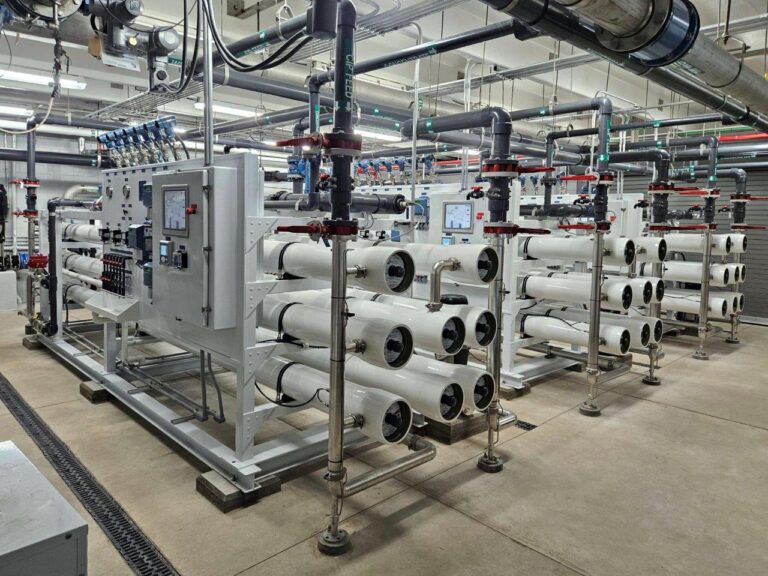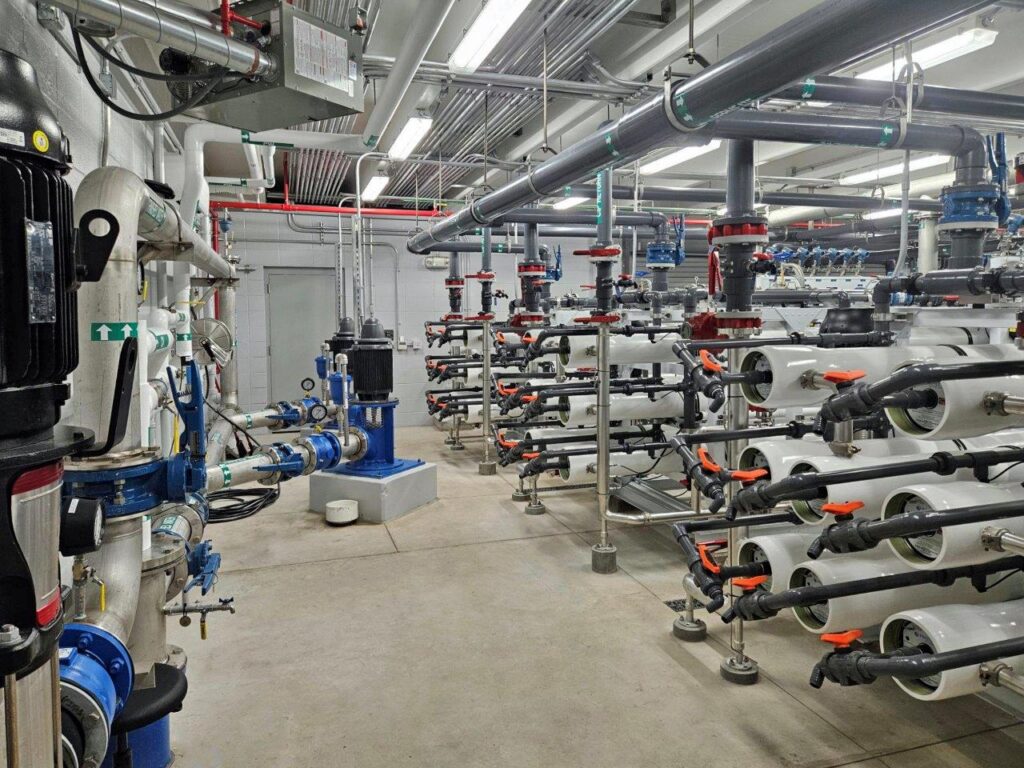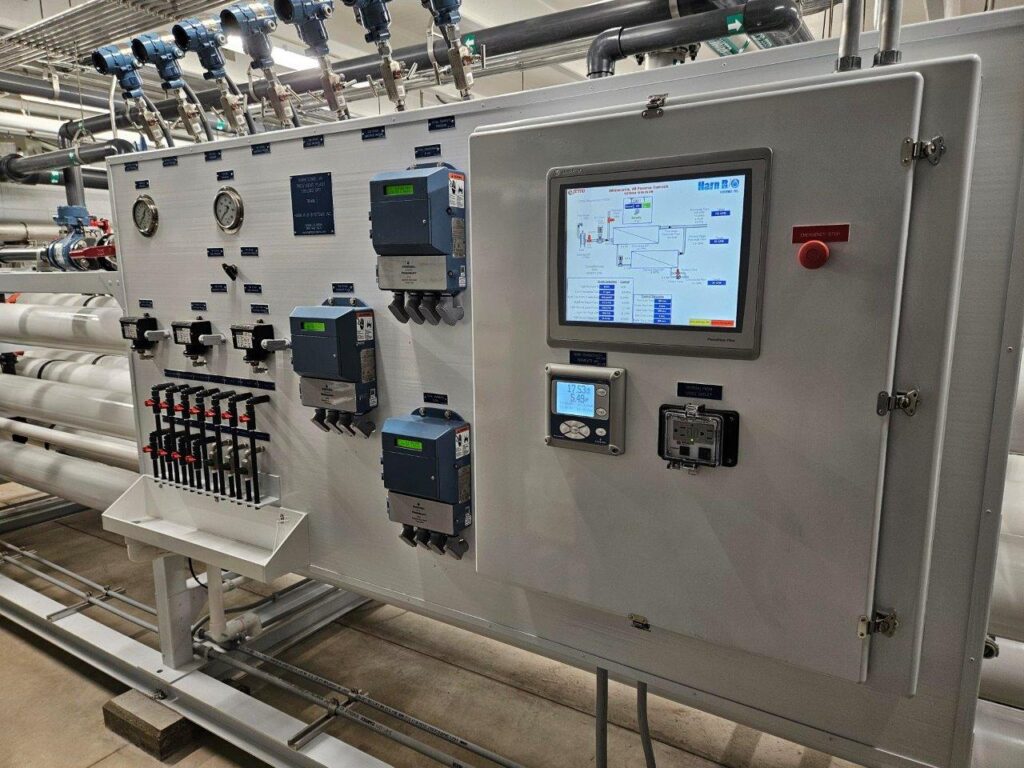In today’s world, the demand for clean and safe drinking water has never been more critical. As communities across the globe strive to provide their residents with high-quality water, the role of advanced technologies becomes increasingly significant.
One such technology, Reverse Osmosis (RO), stands out as a powerful solution for purifying water by effectively removing contaminants and improving overall quality. This innovation is particularly useful for municipalities looking to meet stringent water safety standards and ensure the health of their communities.
McMahon is a leader in addressing complex water challenges through the design and implementation of water treatment systems. Recently, McMahon completed a groundbreaking project with the Village of Winneconne, Wisconsin, marking only the third municipal installation of its kind in the state. This project highlights the importance of RO technology in resolving challenging drinking water compliance issues and delivering a sustainable solution.
Understanding the Unique Benefits of Reverse Osmosis for Municipal Water Systems
Reverse Osmosis has long been recognized as a leading method for purifying water. Incorporating RO technology is particularly beneficial for:
- Efficient Contaminant Removal: RO systems effectively eliminate a wide range of impurities, including heavy metals, pesticides, and pathogens for water safety and compliance with stringent standards.
- Cost-Effective Solution: Over time, RO systems reduce the need for extensive chemical treatments and maintenance, leading to lower operational costs and a prolonged lifespan of infrastructure.
- Adaptability to Various Water Sources: RO technology is versatile, suitable for treating both groundwater and surface water, making it ideal for regions with diverse water quality challenges.
- Reduction of Scale and Corrosion: RO minimizes buildup in pipes and appliances, contributing to reduced maintenance costs and improved efficiency.
Water Treatment Solutions for the Village of Winneconne
The Village of Winneconne was notified that its water supply exceeded the US EPA’s Maximum Contaminant Level (MCL) for Gross Alpha particulate activity.
The Village partnered with McMahon for a solution and began a comprehensive water analysis to determine the extent of contamination. The findings revealed particularly high levels of Uranium 235, a specific isotope of uranium.
Various technologies were evaluated, and it was determined that membrane systems were the most promising for achieving the required removal efficiency. Pilot testing of RO membrane treatment verified the efficacy of uranium removal as the basis for bringing the Village’s water supply into compliance and verified the technology’s ability to remove Radium and hardness from the water supply. Additionally, testing showed that if unoxidized iron was present, there was no need for extra pretreatment processes for iron or manganese removal.
Rather than construct RO membrane treatment systems at both well sites, which are located on opposite sides of the Wolf River, the Village selected to upgrade the Well#2 site as a central treatment system and connect the Well #1 site through the construction of 3,200-feet of 8-inch transmission water main. This design of the water supply transmission line included a 1,150-foot directional bore underneath the Wolf River, providing transportation of raw water from Well #1 to the Well #2 treatment site.was

Project Specifics
- Three (3) two-stage reverse osmosis membrane skids were installed.
- Each membrane skid features eight (8) 8-inch diameter, 6-element pressure vessels, providing a feed capacity of 250-gpm per skid for a total system capacity of 500-gpm when one stage is out of service or in a cleaning cycle.
- A clean-in-place and permeate flush skid system was provided for maintenance.
- Chemical feed systems consisting of scale inhibitors, sodium hypochlorite, blended phosphate and pH adjustment as well as chemicals for membrane cleaning were provided.
- The Well #2 project included upgrades to the electrical and control systems, which also added new emergency backup power for uninterrupted operation.
The Village of Winneconne’s system operates with a mix of 33% raw water and 67% membrane-treated water, which not only achieves the desired water quality but also reduces the need for post-membrane treatment water conditioning.


The Winneconne RO system stands out for its technological proficiency and practical design, being only the third municipal application of its kind in Wisconsin. This pioneering system underscores the importance of advanced water treatment solutions for modern communities by effectively addressing compliance issues and enhancing water quality.
To learn more about implementing a state-of-the-art reverse osmosis system in your community, contact McMahon today. Our water team is ready to assist you with your RO system needs and enhance the quality of your water supply.
